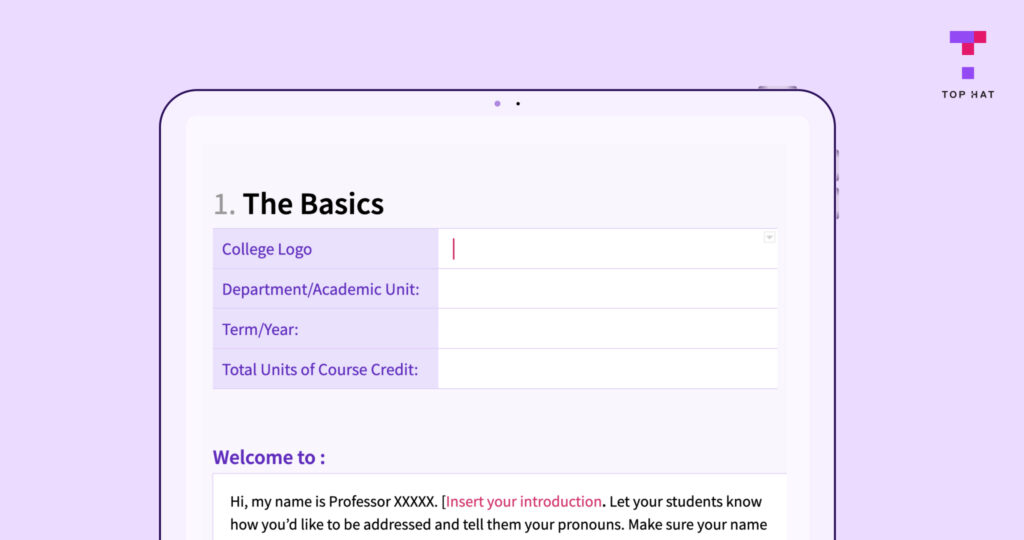Template: Student Perception Survey for College
Collect end of semester student feedback with ease. This free template includes interactive questions for anonymous student feedback. Try it now!

Collect end of semester student feedback with ease. This free template includes interactive questions for anonymous student feedback. Try it now!

Get ready-to-use metacognitive strategies to boost student self-awareness and self-regulated learning—co-created with Dr. Linda Nilson.


Top Hat SkillBuild is a series of live and on-demand training workshops designed to help you bring active learning to your course.

Learn from acclaimed author and educator Dr. James Lang—and get insights and inspiration to elevate your next term. Watch now!

Create higher-order thinking questions with ease! Use our free Bloom’s Taxonomy question generator to make your assignments even more impactful.
Click Here
Download this free blank lesson plan template in Word or PDF. Designed by Top Hat's instructional design team for use in your university classroom.

Your lesson plans are one of the most important tools to set your students up for success. Download this template today!


Discover actionable insights on how Gen AI enhances student instruction. Accelerate learning outcomes—download the report now!

Concerns about student well-being have spurred faculty and institutions to embrace new teaching tools and approaches, and students are responding favorably.
Stay up to date on the latest teaching tools, trends and insights.